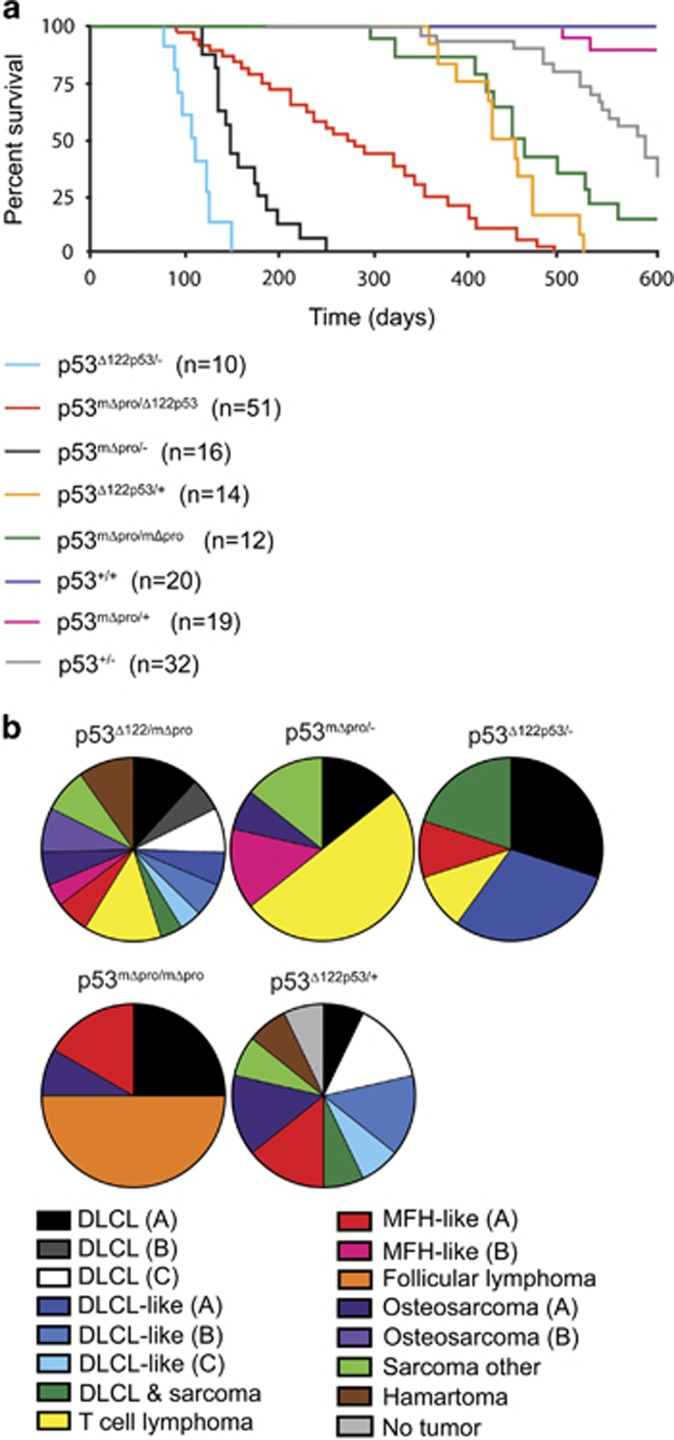Figure 2.
Broad lifespan and mixed spontaneous tumor spectrum of Δ122p53/mΔpro mice. (a) Kaplan–Meier survival curve of Δ122p53/mΔpro mice and mice with various genotype combinations (Δ122p53, mΔpro, wild-type (+), or p53-null (-) alleles and heterozygous combinations). Mice were monitored for 600 days. n=cohort size. (b) The tumor spectrum of Δ122p53/mΔpro mice in comparison with the other genotypes as identified by histo- and immuno-pathological examination. DLCL and DLCL-like tumors were further sub-grouped by cell surface markers into the following: DLCL-A, (B-cell-positive for CD34, CD10, CD45, CD45R, and CD20, and negative for CD138); DLCL-B (B-cell-positive for CD20, CD45, and CD45R, and negative for CD34, CD10, and CD138); DLCL-C (B-cell-positive for CD138, CD45, CD45R, and CD20, and negative for CD10 and CD34); DLCL-like (A), negative for all markers tested (CD3, CD10, CD20, CD45, CD45R, CD138, and cytokeratin); DLCL-like (B) lymphoma CD45-positive but negative for all other markers; DLCL-like (C), CD138- and CD45-positive, and negative for all other markers. Osteosarcoma (A) osteoblastic by morphology, (B) more differentiated by morphology; MFH-like (A) angiomatoid type, (B) non-angiomatoid type

